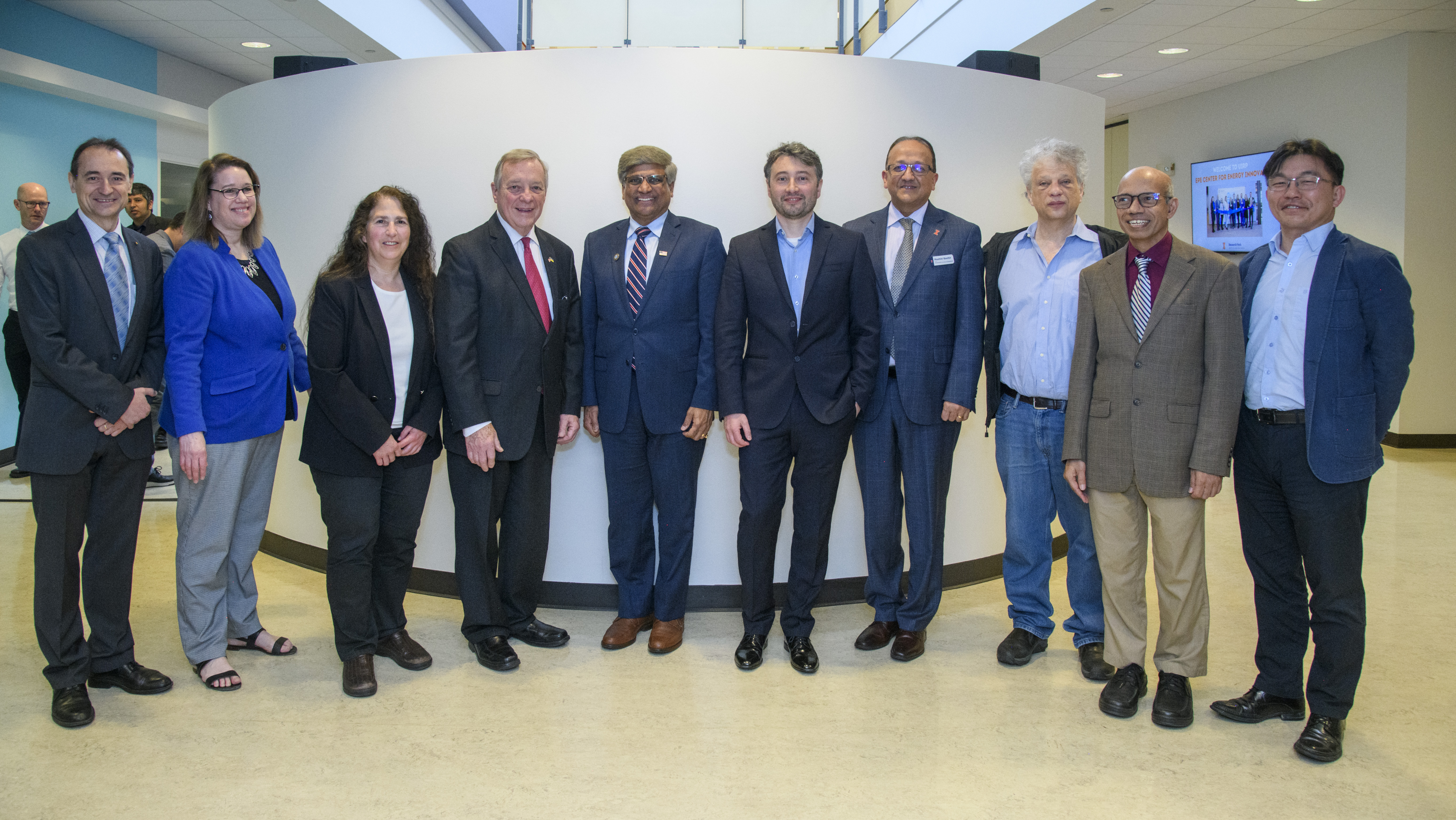The Ripple Effect: How Federal Investments in Research & Innovation Power Regional Economies
April 22, 2022
The clang-clang-bang of an MRI isn’t exactly soothing, but this powerful imaging tool can offer clarity and hope to people facing a difficult diagnosis. University researchers, including a Nobel-prize winning scientist who spent decades at the University of Illinois Urbana-Champaign, developed the MRI technology and subsequent enhancements, fundamentally changing the way that clinicians diagnose disease and ushering in a new era of medical care.
It can be easy to understand how university research advances like the MRI affect our lives. But beyond new devices or drugs, beyond robots that monitor crops or machines that make molecules, university research—including fundamental scientific discovery—also pays economic dividends. Federally funded research at the nation’s universities creates new companies, industries, opportunities, and jobs—and the tech-savvy, educated workforce needed to fill them. In the state of Illinois, the impact is significant.

“Money for research that comes to the university flows out to the broader community in sometimes surprising ways, and university research creates a ripple effect that helps to power the state’s economy,” said Vice Chancellor for Research and Innovation Susan Martinis. “When scientists buy equipment and supplies for their projects, they turn to vendors in communities across the state. When scholars gather for a conference, organizers may pay for the event space with funds from a research grant—so while there might not be an obvious tie between the university’s research enterprise and Chicago hotel rooms, for example, research supports many different sectors across the state.”
The Director of the National Science Foundation, Dr. Sethuraman Panchanathan, visited Champaign-Urbana on Friday, April 22nd, to announce two significant new awards for Computer Science's Mind in vitro—Computing with Living Neurons and NCSA's forthcoming ACCESS Program, totaling more than $40M. The projects are investments in fundamental scientific discovery and the nation’s broader research community.
When scientists buy equipment and supplies for their projects, they turn to vendors in communities across the state. When scholars gather for a conference, organizers may pay for the event space with funds from a research grant—so while there might not be an obvious tie between the university’s research enterprise and Chicago hotel rooms, for example, research supports many different sectors across the state.”
— Susan Martinis, Vice Chancellor for Research and Innovation
Funding for research at the University of Illinois Urbana-Champaign is substantial—in FY21, R&D expenditures exceeded $731M. Support from the federal government is a big part of that: we often lead the nation in funding from the NSF, we’re #3 in Department of Energy expenditures, we’re among the top 25 in both U.S. Department of Agriculture and Department of Defense funding, and our funding from the National Institutes of Health is robust and growing, up 37% in the last five years. That matters to our researchers, of course, because they use this support to address wicked problems—but it also matters to our local and regional communities. Research activities require armies of skilled workers in cities and towns across the state, and research-related purchases support hundreds of small businesses.
Calculations by Professor of Agricultural and Consumer Economics Sandy Dall’erba, who leads the university’s Center for Climate, Regional, Environmental And Trade Economics, show that every $1 spent on scientific research at UIUC leads to an additional $1.14 in indirect and induced impact—such as the purchase of material and salaries, or stimulus from employees’ spending—in the state of Illinois.
“In terms of employment creation, every new job devoted to scientific research at UIUC leads to an additional 1.88 full-time equivalent job creation in the state of Illinois,” said Dall'erba.
NSF also supports nearly 100 Graduate Research Fellowships every year. The annual investment ($14M in FY21) funds opportunities for students to learn from some of the nation’s most innovative researchers and produces workers ready to fill good-paying STEM jobs. In 2022, more than 800 people graduated from our campus with a doctoral degree—only two other universities in the nation produce more PhDs, and the state of Illinois is 6th overall.
Federal funding for research also provides a spark for university-industry partnerships, uniting researchers and companies to the pursuit of understanding and innovation in areas of strategic national importance, like semiconductors, quantum computing, and a safe and resilient power grid.
In terms of employment creation, every new job devoted to scientific research at UIUC leads to an additional 1.88 full-time equivalent job creation in the state of Illinois.”
— Sandy Dall’erba, Professor of Agricultural and Consumer Economics
Funding mechanisms like the Small Business Innovation Research (SBIR) and Small Business Technology Transfer (STTR) programs are another way that research institutions and small business collaborate.
“The state recently created a matching fund program for Illinois companies that successfully compete for Phase 1 SBIR/STTR funding,” Martinis said. “Matching funds like these are vital for small business growth—and beautifully augment university programs in the Research Park that help small businesses across the state compete for these types of awards.”
The Research Park plays an important role in the region’s economy.
During his visit, Dr. Panchanathan met with campus leaders and NSF-funded investigators and toured facilities in the University’s Research Park, the university’s hub for both corporate R&D operations and startup companies alike.

“Companies locate in the Research Park to tap into our faculty expertise our student workforce, and the research ecosystem that’s been built on decades of federal investments in research equipment and facilities,” said Assistant Vice Chancellor for Innovation Laura Appenzeller, who leads the university’s Research Park. “The 125 companies with operations on our campus are an incredible asset to demonstrate commercialization and innovation.”
Taken collectively, companies in the Research Park employ more than 2,200 people (including 800+ student interns), making them the 3rd largest employer in Champaign County. Many of these student workers transition from intern to full-time employee upon graduation.
“Grainger Engineers have strengthened nascent industries with innovations like YouTube, PayPal, the transistor, LED, and so many more. From the moment our students walk in the door, they roll up their sleeves and get to work,” said Rashid Bashir, Dean of The Grainger College of Engineering at UIUC. “Our legacy of solving problems first has positioned us as current leaders in AI, quantum, sustainability, and medical technologies.”
Overall, more than 13,000 employers recruit our undergraduates. In a recent survey, more than 94% of graduates secured a “first destination”—defined as a job, enrollment in graduate or professional school, or a volunteer position—within six months of graduation. Importantly, most (66%) choose to stay right here in Illinois, contributing their skills to the state’s most important resource: its people. Regardless of where our graduates land, however, their education has been heavily influenced by the new knowledge our faculty generated through federally competitive research grants!